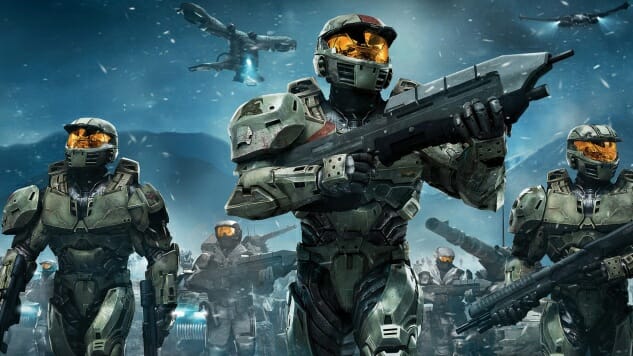Halo Wars 2 Will Underwhelm Both Halo and Real-Time Strategy Game Fans

The Halo franchise began with a boast: Combat Evolved. Bungie and Microsoft bet that complex maps, vehicular warfare, and bombastic space opera would reinvigorate the console shooter. The accessible, multi-player focused shooter dominates contemporary game sales because of Halo and Halo 2. The innovations in those games reshaped a market. But with Halo Wars 2, the franchise spin-off treads water with both its chosen genre and the sci-fi universe it inhabits.
Halo Wars took the battle between humanity and the Covenant into the realm of real-time strategy in 2009 after Command & Conquer 3 momentarily revived the console real-time strategy game (RTS). But where the main shooter series balanced accessibility with layers of complexity, Halo Wars stripped the RTS down to its bare essentials at the cost of the tactical/strategic complexities that are the heart of the genre. And while the new sequel shows flashes of a possible new and faster approach to RTS matches, which too often get bogged down in micromanagement, the challenges the game offers don’t use this pace to present any other new spins on a genre that has been relatively static in terms of structure and design since Warcraft 3’s release over a decade ago.
Halo Wars 2 streamlines much of the busy work of base building and resource collection that weighs down the early stages of an RTS match. Resource generation is done through modular additions to your home base. Those same modular slots can also be used to make buildings that generate infantry/vehicle/air units. Although you’ll likely be hurting for resources at the beginning of a match, easy upgrades to your base means you’ll be flush with resources by the mid/late stages of a match.
Halo Wars 2’s strategic element then involves the make-up and allocation of your combat units. It’s a basic rock/paper/scissors set-up with infantry strong against air which is strong against vehicle which is strong against infantry. Individual unit types in those classes complicate the dynamic a little (an infantry robot who is excellent against vehicles, an anti-air vehicle, etc.) but there are enough complementary options for your squad make-up and such a surplus of resources that you rarely feel pressed for a counter.
With the exception of missions that task you with devising a defense when you’re outmanned and outgunned, strategy in Halo Wars 2 becomes rote tactics: crank out resource generating buildings, build defenses, turtle, blob the enemy once you have numerical superiority, victory. Later missions in Halo Wars 2’s campaign attempt to complicate this by starting you at massive disadvantages to your enemy, but establishing a stable defense just moves to the top of the queue and then you focus on the other priorities next.







































